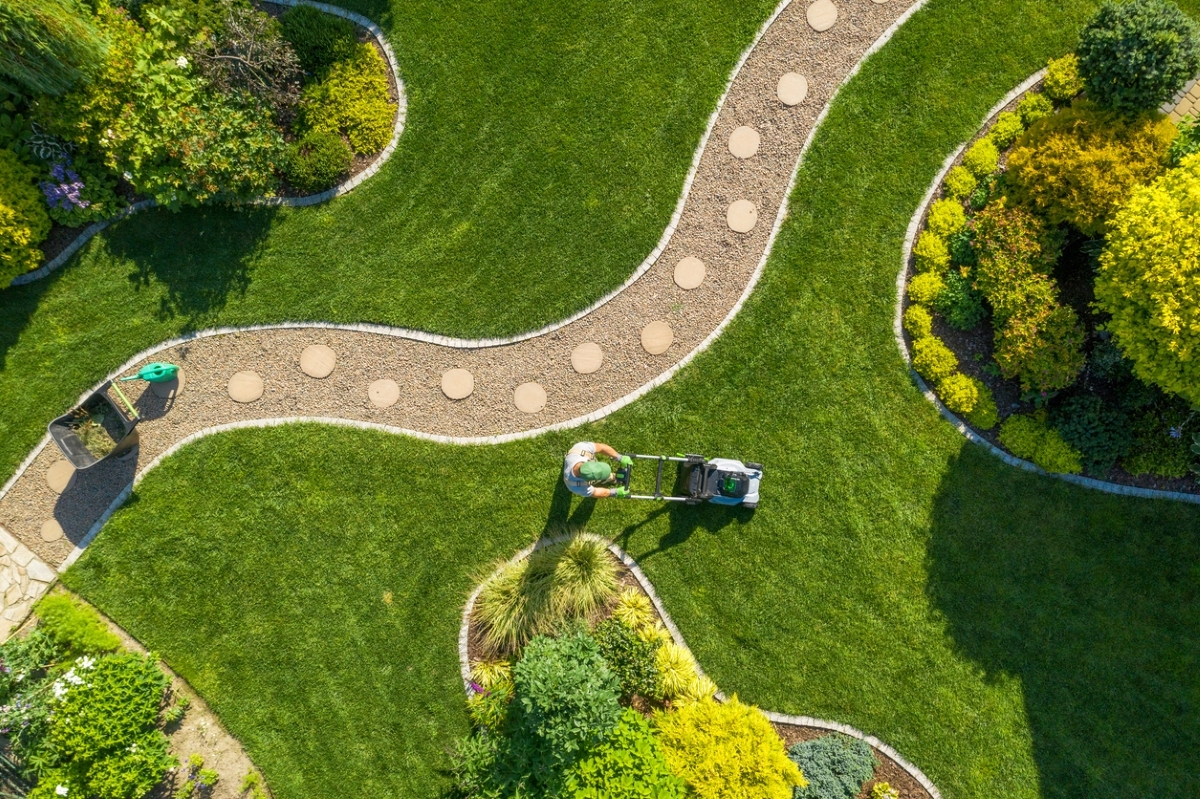

We may earn revenue from the products available on this page and participate in affiliate programs. Learn More ›
There’s nothing like the smell of freshly cut grass to make you think of warm summer days. But our obsession with perfectly-manicured lawns is fading. With trends like No Mow May growing in popularity and grass alternatives becoming more well-known, it seems that traditional lawns might be becoming a thing of the past.
But how do you care for a nontraditional lawn? If you’re thinking about replacing some or all of your turfgrass with drought-tolerant options like pavers and gravel or colorful creeping thyme, know that your maintenance tasks will become less, but not nonexistent.
Read on to learn what’s involved with keeping up today’s most popular lawn alternatives.
1. Manage Hardscaping Runoff
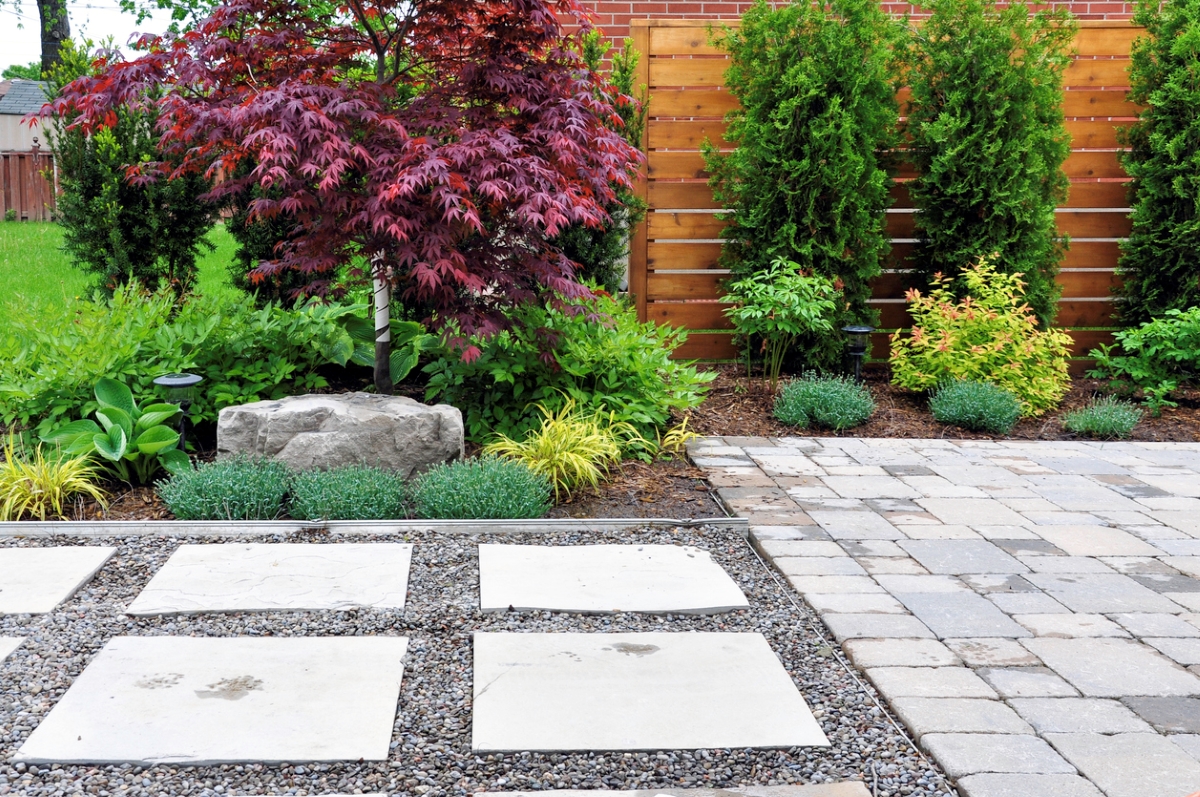
Hardscaping is one of the most visually striking replacements for grass. It’s also one of the easiest to care for. “If you want a sleek, modern, and low-maintenance yard, go for large, smooth pavers in a light color,” says Joy Aumann, co-founder of Luxury SoCal Realty, adding that they can provide a luxurious feel to any home landscape.
While attractive, one of the main challenges with hardscaping, particularly large slabs and pavers, is water runoff. If you’re installing a patio, opt for permeable surface materials and be sure to incorporate a gravel base to help with drainage.
Another way to divert excess water and prevent it from overwhelming storm drains is to add plants. Strategic placement of native trees and shrubs among hardscaping can help capture and filter runoff, replenish the earth below, and provide shade.
RELATED: How Much Does a Paver Patio Cost?
2. Mow Clover Sparingly
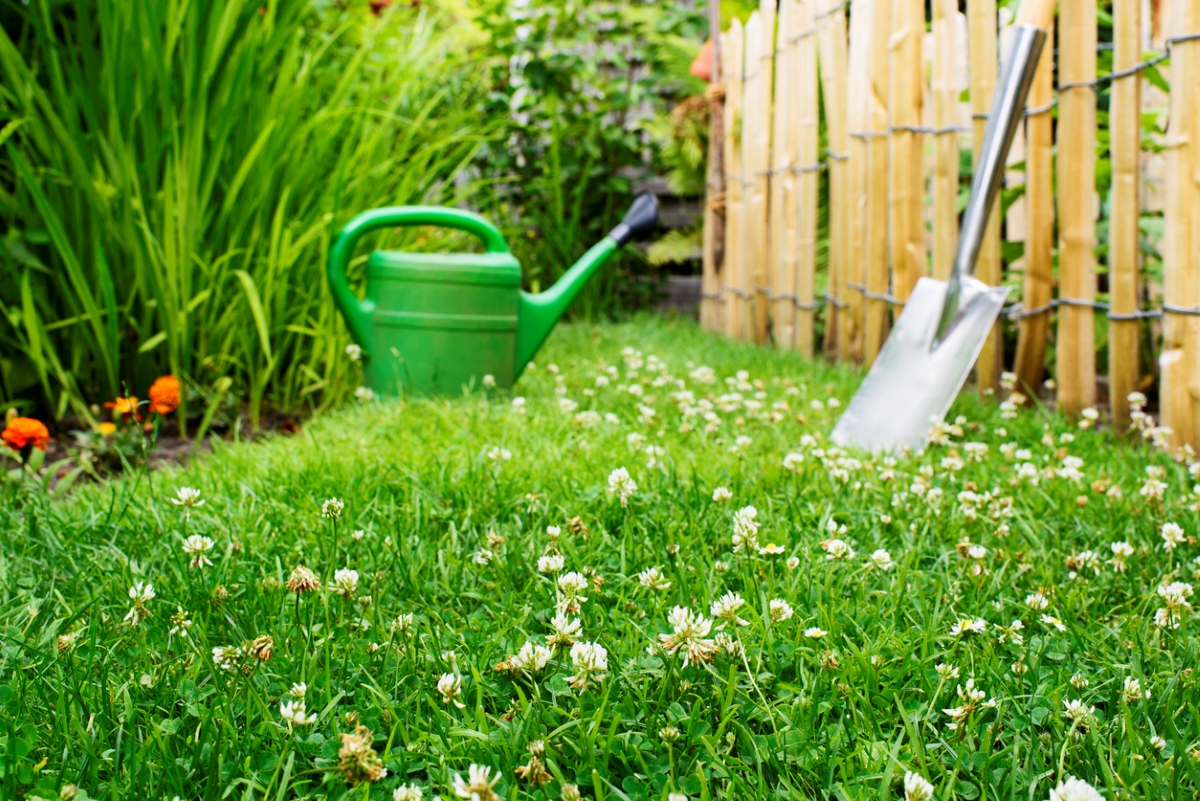
Besides water conservation, one of the biggest perks of a nontraditional lawn is less maintenance. For example, clover doesn’t need to be mowed as frequently as turfgrass. In fact, because white clover will only grow to between 2 and 8 inches tall, you only need to mow it a couple of times a year to clip weeds, deadhead spent flowers, or to prepare for winter. Otherwise, leaving it alone is actually one of the best things homeowners can do to maintain a healthy lawn.
You can skip the fertilizer with a clover lawn, too, as the cover crop naturally introduces nitrogen to the soil. This avoids having to reapply commercial fertilizers throughout the year—a necessary task for keeping turfgrass green—as well as the potential for contaminating local waterways when excess fertilizer ultimately runs off.
RELATED: 9 Good Reasons to Consider Planting a Clover Lawn
3. Replenish Organic Mulch
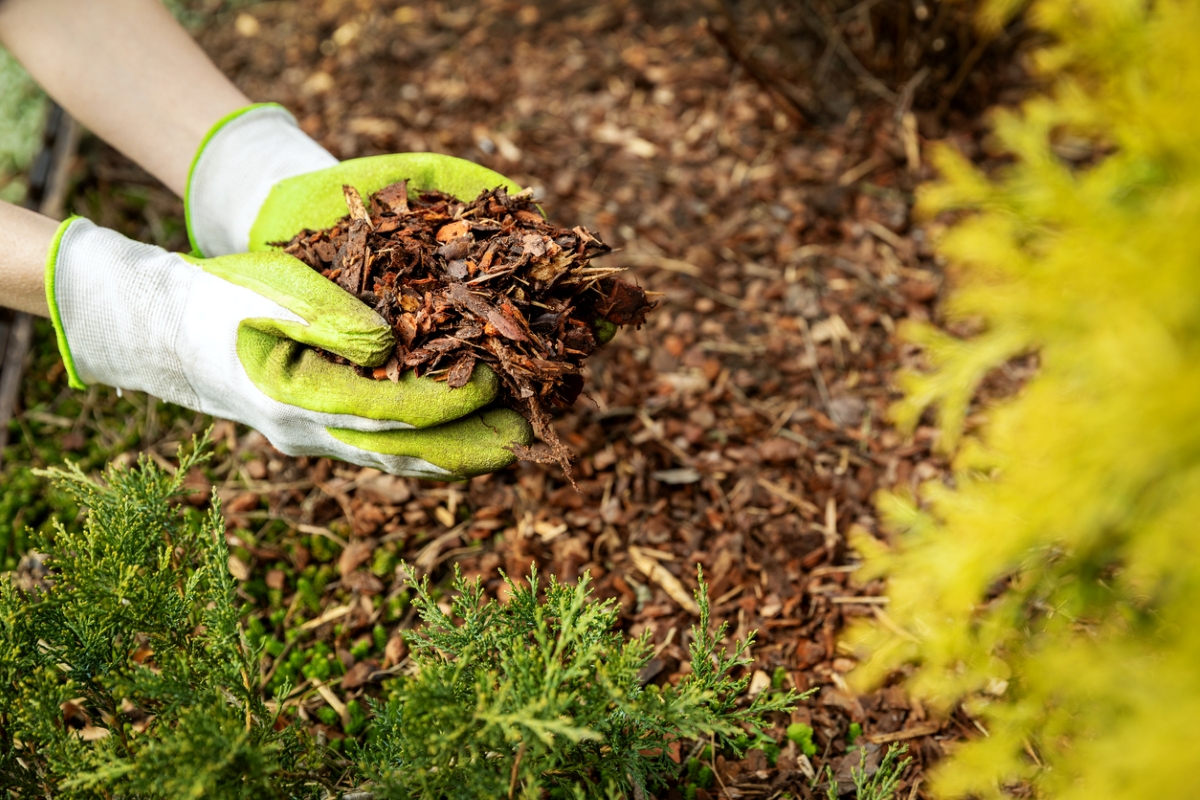
Organic mulch is another viable replacement for grass. It suppresses weeds, retains moisture, and even supplies nutrients to the soil underneath. It’s also soft to walk on, something you don’t get with hardscaping.
While it’s certainly easy to manage compared to a traditional lawn, there’s still some upkeep to be done. Mulch can shift during bad weather, it may get kicked around by pets and guests, and it slowly decomposes into the ground. About once a year, you’ll need to replenish the material to prevent it from looking sparse.
RELATED: The Dos and Don’ts of Mulching the Garden
4. Keep Thyme Contained

Creeping thyme is incredibly easy to grow and a vibrant alternative to traditional turfgrass. It needs full sun and well-draining soil to thrive and flower. It’s drought tolerant and rarely—if ever—needs to be mowed, but it does take time to become established.
“Don’t be disheartened if you don’t get a lot of blooms during the first season,” says Amber Noyes, Executive Editor of Gardening Chores. “It takes about a year to establish and then will begin to spread during its second season. Once they begin to creep, you’ll get stunning blooms in a variety of colors.”
Creeping thyme isn’t considered invasive, meaning you can grow it near other plants without having to worry about crowding them out, but it does spread quickly and may need to be pruned from time to time to keep it within its designated area. The best part of this minimal maintenance is that you can dry what you harvest and use it to flavor food or make homemade fragrances.
RELATED: Creeping Thyme Lawn: An Eco-Friendly Alternative to Turfgrass
5. Tidy Gravel Edges
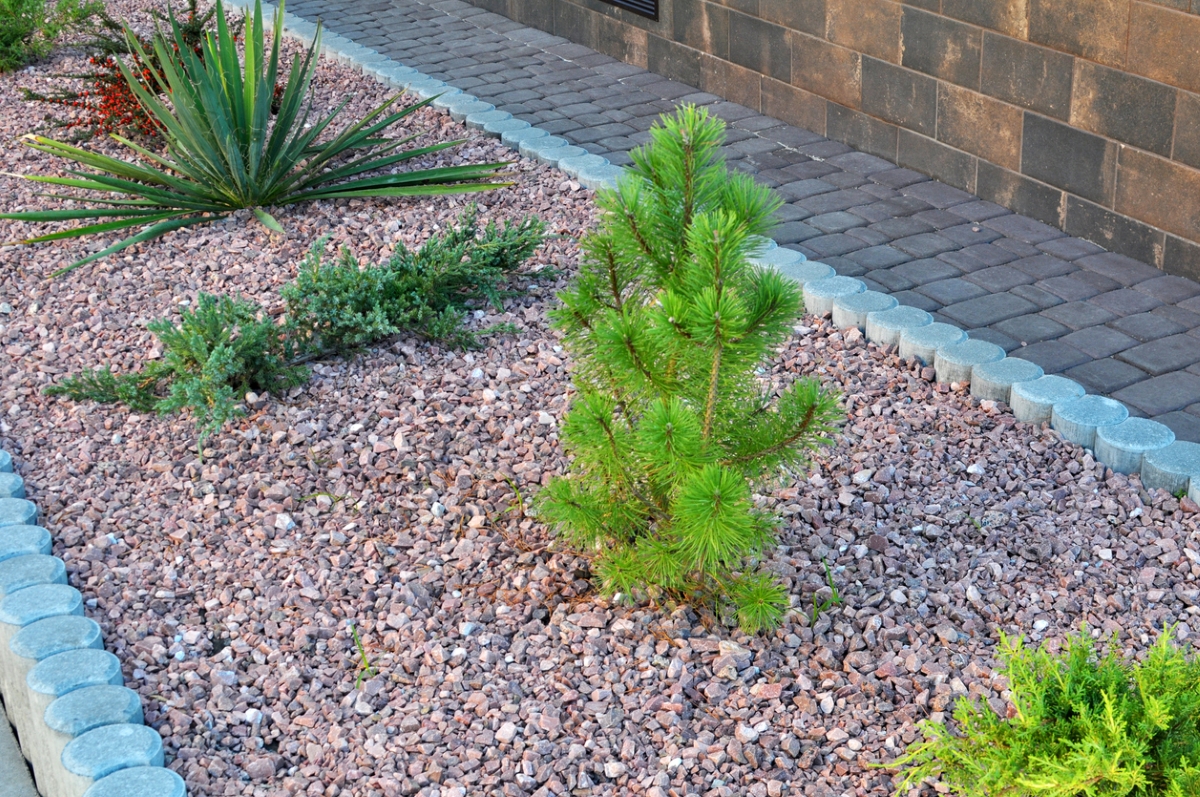
Gravel is an appealing ground cover for modern outdoor living areas, especially when paired with pavers or containers filled with plants. There are several types that work well in home landscapes, including crushed stone, river rocks, pea gravel, marble chips, lava rocks, and even tumbled glass. (Yes, it’s possible to have a glass lawn!)
Like mulch, gravel can spill over edging and be tricky to contain at times. A quick sweep will take care of a few stray rocks, but installing taller borders can help provide a more permanent solution.
6. Reseed Wildflowers as Needed
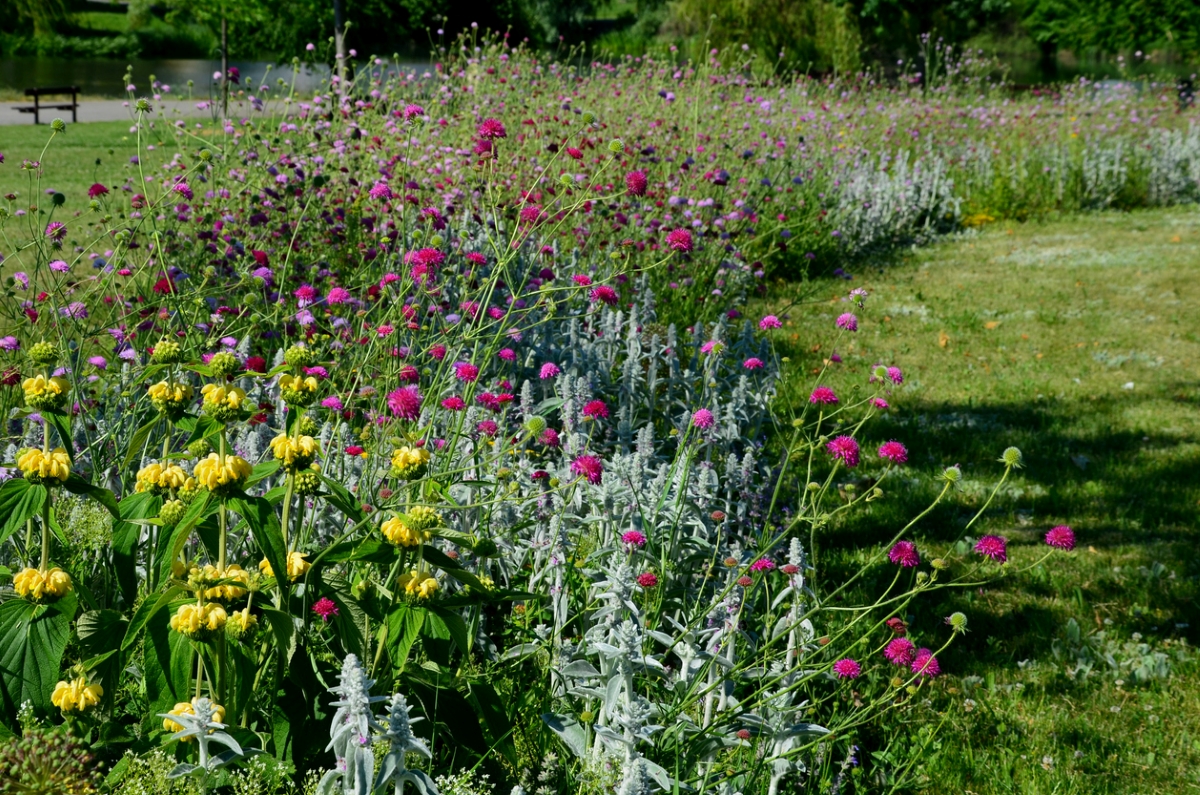
Turning your conventional lawn into a native wildflower garden not only helps conserve water, it also supports important local pollinators. Depending on the varieties you choose, you may need to reseed every few years to ensure you get plenty of blooms rather than just long grasses. Many wildflowers can be planted in spring, but in northern regions it’s best to plant in autumn because cold winter temperatures aid germination of many native seeds.
For annual and biennial plants, be sure to allow late-bloomers to drop seeds before mowing them back at the end of each growing season. Leave clipping in place, but be sure to remove remnants of any weeds or unwanted species to prevent them from coming back next year.
RELATED: 7 Things to Know When Growing a Wildflower Garden
7. Keep Moss Moist (at First)
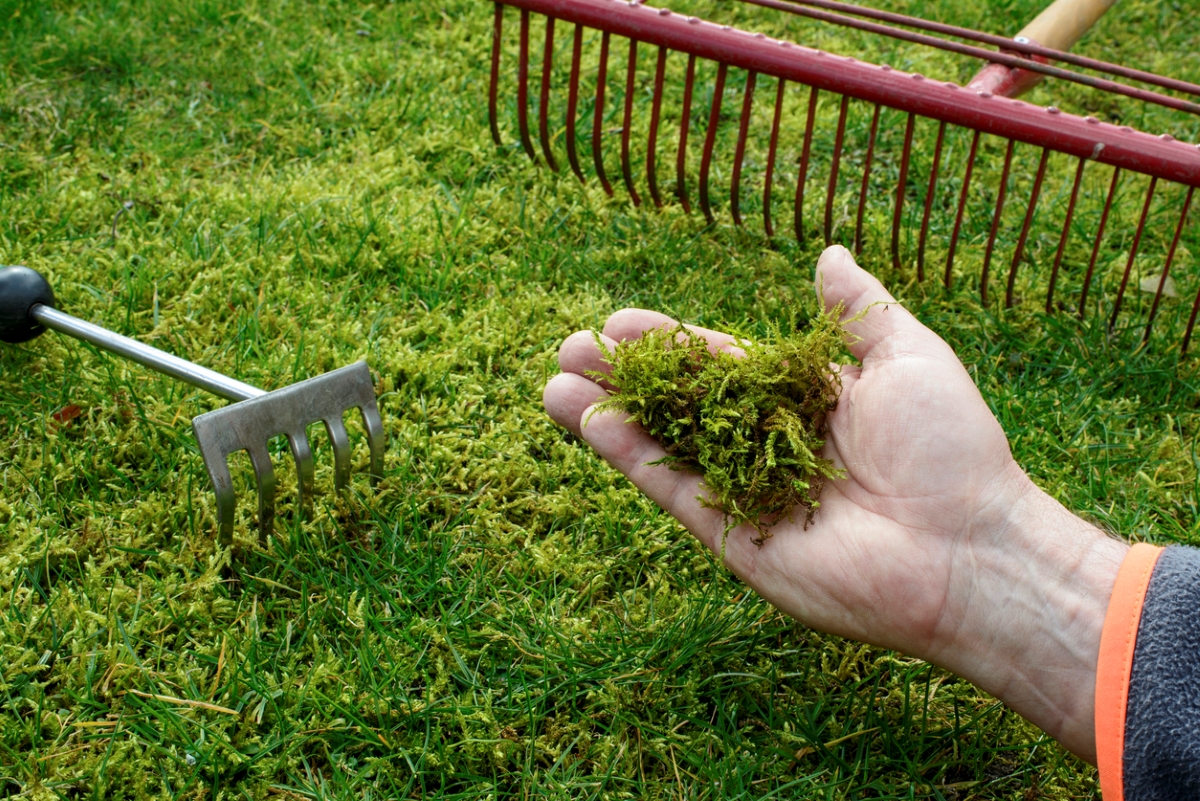
Moss is another unique alternative to the conventional grass lawn. It retains moisture, provides nutrients to the soil and surrounding plants, and helps prevent erosion. It’s also incredibly easy to establish—it doesn’t even need to be planted, just pressed into the soil and secured with planting pins.
“For moss to grow thick and luscious, it must be kept moist for the first 4 to 6 weeks while it establishes,” says Matt Hagens, founder and primary author of Obsessed Lawn. “Keep watering it until it doesn’t lift away from the soil when you gently pull it. After that point, it doesn’t need regular watering and will get most of its hydration from the surrounding air.”
RELATED: The Best Low-Maintenance Ground Cover Plants for Your Property
8. Seldomly Sweep Artificial Turf
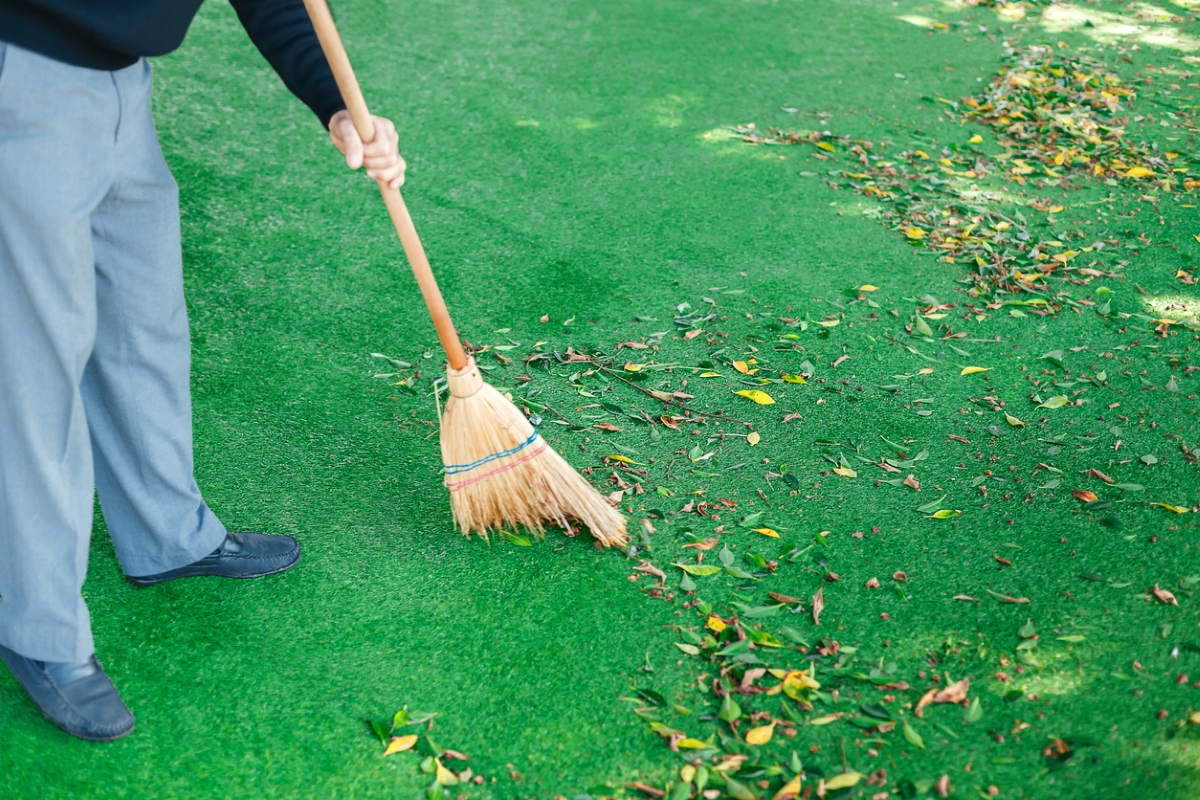
For those with severe allergies or limited mobility, artificial turf may be the perfect replacement for real grass. Lawn care for this option is minimal, requiring only minor cleanup once in a while.
“Artificial turf won’t sprout weeds and doesn’t need replenishing; all it needs is a sweep to keep it looking its best,” says Ryan Fitzgerald, owner of Raleigh Realty. “Use a hard-bristled brush or outdoor vacuum to remove any dirt, fallen leaves, and debris, and you’re ready for summer.”
RELATED: 18 Easy Grass Alternatives for Your Lawn
9. Pull Weeds by Hand
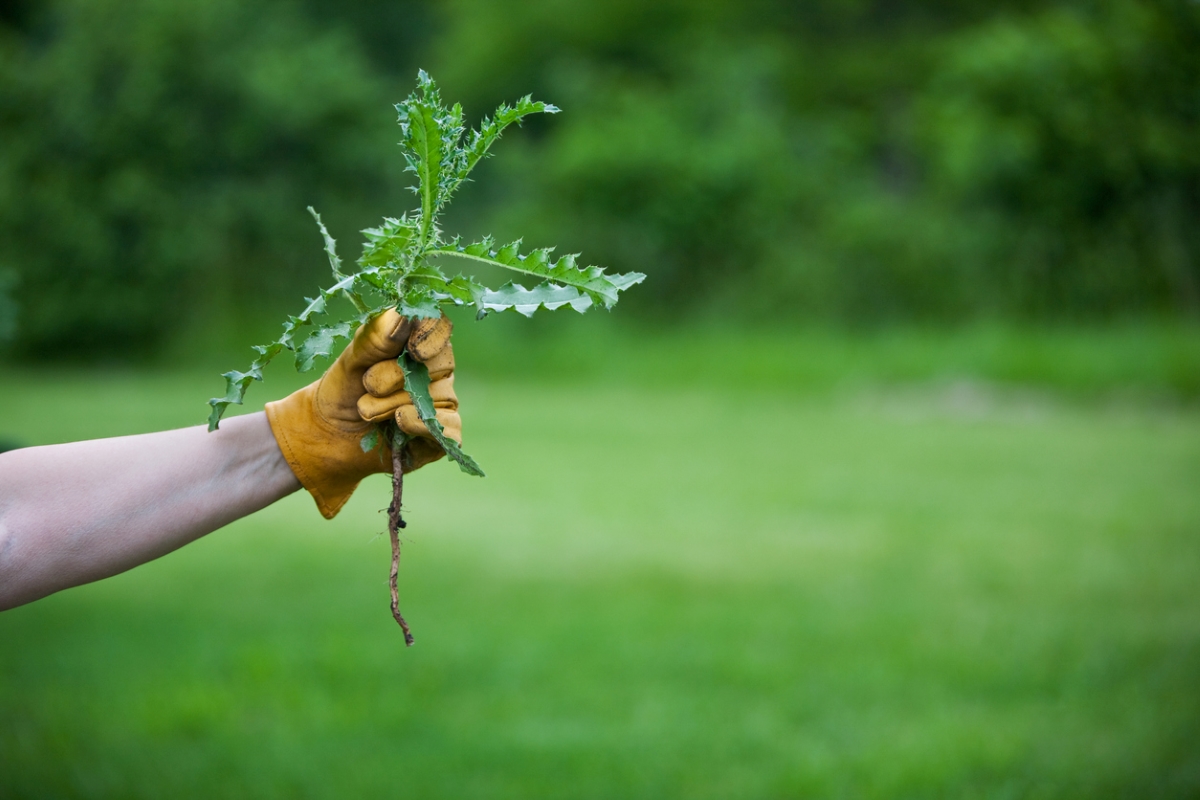
Although hardscaping and most living lawn alternatives inherently suppress weeds, it’s still important to stay vigilant and remove any plants that you don’t want growing in your landscape before they spread.
Hand-pulling is the most environmentally friendly option, of course, but also consider letting some noninvasive “weeds” like dandelion grow in your landscape to help support bees and other nectar-loving pollinators that might pass by.
